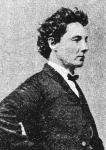Advertised as a 'refined musical extravaganza,' this localised version of the F. C. Burnand burlesque on Douglas Jerrold's original 1929 drama had an extensive musical component, containing (according to one source) some forty musical numbers. The story was set in seven scenes, with these being:
- Act 1; Scene 1. Susan' Cottage
- Scene 4. Dame Halley's Cottage
- Act 2; Scene 1. The Jolly Mugs
- Scene 3. Deck of H.M.S. Calliope
The additional material supplied by Bert Royle no doubt required of him some intensive research into local identities and recent events when the production was taken on tour. For example, its staging in Brisbane (1890) saw part of the story is set in the Brisbane Gaol, which suggests that the text would have contained satirical hits aimed at the local audience. The Brisbane Courier writes in regard to this aspect of the 1890 production, 'Mr Sheridan, as Henry Irving Smith, a smuggler, and afterwards Captain Crossgrain, was irresistibly funny, and had been supplied with any number of local hits' (28 April 1890, p.4). When the company returned for a two night season a week later (having opened for two nights at Ipswich during the week), the paper's critic further noted that 'the dialogue was interspersed with many local allusions to persons and occurrences [which] were appreciated, and created a great deal of amusement' (3 May 1890, p.5).
The musical programme inserted into the production included 'a magnificent song, '"Traveller's All" [sung] by Mr Montague, [of which] it is said… had not been heard in Australia for over a quarter of a century,' 'The Villagers Chorus,' 'Merry Little Bridesmaids' (female trio), 'The Smugglers, Silence and Fun' (male trio), 'The Coquette' (solo), 'How He Carries On' (solo), 'On Board the Lugger' (company), 'Two Lovely Black-Eyes' and 'Villains of the Deepest Dye' (quintet), 'Heave Away' (solo/ chorus), 'It's English, You Know' (with dialect verses in English, Irish, Scotch, French, Yankee and Dutch sung by J. F. Sheridan), 'Farewell My Own,' and 'Pretty See-U-Pass' (company), 'Moonlight Killarney' (duo), 'The Kranky Boys' (quartette), 'Turn on Old Time' (trio), 'Tooral-I-Oo-Ral-I' (company), 'Beautiful Moon' (duet) and the solo/chorus 'The Blatherun' (Brisbane Courier 28 April, p4). The Sydney season (1891) was commended, too, for the quality of the several ballets, the highlights being 'The Snow Ballet,' which was described as 'a scenic and terpsichorian display [that ranked] as the most wonderful and picturesque ever presented to an Australian audience' and 'The Grand Sailor Ballet' (Sydney Morning Herald 25 Apr. 1891, 2). John F. Sheridan also performed two new numbers, 'You Can't Think of Everything' and 'Is He Guilty?' (a parody on 'Bright Little Glass').
